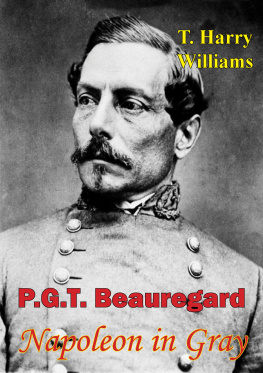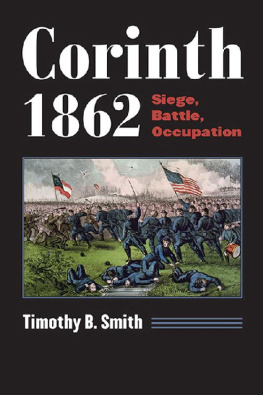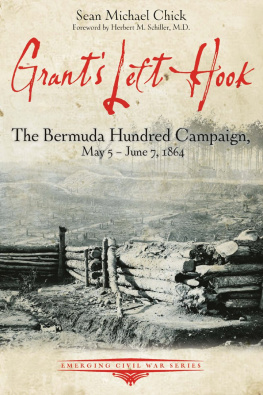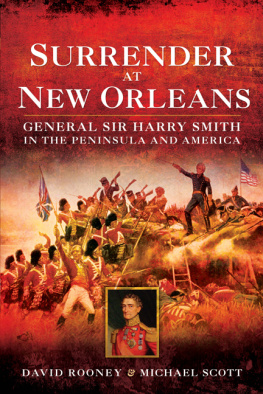

This edition is published by PICKLE PARTNERS PUBLISHINGwww.picklepartnerspublishing.com
To join our mailing list for new titles or for issues with our books picklepublishing@gmail.com
Or on Facebook
Text originally published in 1960 under the same title.
Pickle Partners Publishing 2014, all rights reserved. No part of this publication may be reproduced, stored in a retrieval system or transmitted by any means, electrical, mechanical or otherwise without the written permission of the copyright holder.
Publishers Note
Although in most cases we have retained the Authors original spelling and grammar to authentically reproduce the work of the Author and the original intent of such material, some additional notes and clarifications have been added for the modern readers benefit.
We have also made every effort to include all maps and illustrations of the original edition the limitations of formatting do not allow of including larger maps, we will upload as many of these maps as possible.
P. G. T. BEAUREGARD Napoleon in Gray
By T. HARRY WILLIAMS

TABLE OF CONTENTS
Contents
Dedication
FOR ROBBIE LANE
Preface
Every biographer is certain to be asked one question: why did he pick his particular subject to write a book about? In the case of General Beauregard I might answer: because I wanted to; this paradoxical personality and his dramatic life interested me so much that I was drawn to study him and to try to analyze him. But more impelling than the human lure of his story was the fact that Beauregard was important enough a figure to deserve a biography. He was one of the eight full generals of the Confederacy. He held six independent commands, and for a period he commanded the Army of Tennessee, one of the two principal Confederate field armies. And his post-war career seems to me more fascinating than that of any other Southern general.
Civil War fans, being what they are, are bound to raise the question: was Beauregard a great general? Or, some may ask, was he even a good one? The answer to the first is no, with a caveat for Beauregard that there are few great generals. The answer to the second is yes, with several caveats against him. Beauregard, like other officers in the war, was elevated to army command before he was ready for it. He demonstrated some serious deficiencies and made some bad mistakes. In my opinion he would have developed into a very good field commanderhad he been given the chance. But his past errors and his personality quirks had aroused such a distrust of him among the men in the high command that the opportunity was denied. Had things happened a little differently, he might have gone on to become one of the fighting heroes of the Confederacy. As they did happen, he is probably remembered most, as a military man, for his defense of Charleston.
But with Beauregard one can never be sure what he would have become. He was not a consistent personality like Lee. He was a paradox, and his life was a paradox. He was an ardent Southerner, and yet, as a Creole, he was in many ways an alien in the Anglo-Saxon Confederacy. Before a battle he was often visionary and impractical, but once in a fight he was a grim and purposeful soldier. He affected the manners of a cavalier of the Old South, but after the war he helped to destroy the old agrarian way and to build the Newthe industrialSouth. One never knows about him....
Perhaps a New York reporter who interviewed him after the war had it right. He said that Beauregard was not a first-class military man but a first-rate second-class man. Maybe the tragedy of the Confederacy was that it did not have enough first-class generals to go around.
For their generous and patient assistance when I was examining their records I wish to thank the staffs of the Southern Historical Collection, University of North Carolina Library; the South Carolina Historical Society; the Division of Manuscripts, Library of Congress; the Department of Archives, Louisiana State University; the National Archives; the Howard-Tilton Memorial Library, Tulane University; the Duke University Library; the Missouri Historical Society; the Emory University Library; the Charleston Library Society; the Confederate Memorial Hall; the Cabildo; the North Carolina State Department of Archives and History; the Confederate Museum; the South Caroliniana Library, University of South Carolina; the Confederate Memorial Institute; and the Florida Historical Society.
Many people helped my research by making suggestions about sources or providing documents. My thanks are due to Dr. J. G. de Roulhac Hamilton, Dr. C. Percy Powell, Mr. J. B. Riggs, Miss Elizabeth Drewry, Dr. V. L. Bedsole, Dr. Robert Woody, Miss Margaret Jemison, Mr. Stanley C. Arthur, Dr. J. W. Patton, Miss Helen McCormack, Miss Elizabeth Jervey, Mrs. Helen Bullock, Dr. J. Harold Easterby, Dr. R. W. Meriwether, the late Miss Stella Drum, Dr. Francis L. Berkeley, Jr., Miss Alberta Johnson, Mr. T. R. Hay, and Dr. Buford Rowland. The aid of others is acknowledged at appropriate points in the notes.
Mr. Otto Eisenschiml read the chapters on Shiloh, and Dr. Frank Vandiver read the entire manuscript. Both contributed valuable suggestions for improvement.
A number of years ago the late Mr. Robert W. Barnwell, Sr., of Florence, South Carolina, who was a close student of the war and a great admirer of Beauregard, talked with me at length about this study and gave me many stimulating ideas. I regret that he did not live to see it completed.
Mrs. Thomas M. Smylie, formerly of the Louisiana State University Press, helped ready my manuscript for publication. The labor of typing it was done by my wife, who also made the index.
Mr. T. S. Kennedy, Pensacola, Florida, readily extended permission to reproduce quotations from the diary of Stephen R. Mallory. The editors of the Journal of Southern History allowed me to incorporate sections from two articles of mine which originally appeared in that quarterly.
The maps of Charleston, Manassas, Shiloh, and Petersburg are from the excellent handbooks of the National Park Service, and are used here by the permission of Mr. Herbert Evison, Chief of Information. The Park Service maps are extremely accurate; they provide a graphic picture that, for the general reader cannot be excelled. The fine map of the Richmond-Petersburg area was made by Barbara Long for E. B. Longs edition of Grants Memoirs. It is reproduced through the kindness of Mrs. Long and the World Publishing Company.
The Graduate Council of Louisiana State University facilitated my research with two grants-in-aid.
T. Harry Williams

P. G. T. Beauregard, from an Oil. Painting by Thomas C. Healy
Illustrations
P. G. T. Beauregard
Engineer Officer Beauregard and his first wife, Marie Laure.
Beauregard at Charleston sometime during the war.
Cover of sheet music, The Beauregard Manassas Quick-Step.
Council of Confederate commanders the night before Shiloh.
General Beauregard.
Fort Sumter after the Federal bombardments.
Beauregard in 1887.
Lilian Beauregard Larendon and Laure Beauregard Larendon.
Maps
Next page










